|
 Dwight Peck's personal website Dwight Peck's personal website
Sirmione and the neighborhood, May 2016
Ten days in the home of the Scaligeri and the heretics
You may not find this terribly rewarding unless you're included here, so this is a good time for casual and random browsers to turn back before they get too caught up in the sweep and majesty of the proceedings and can't let go.
Views of Casale Monferrato
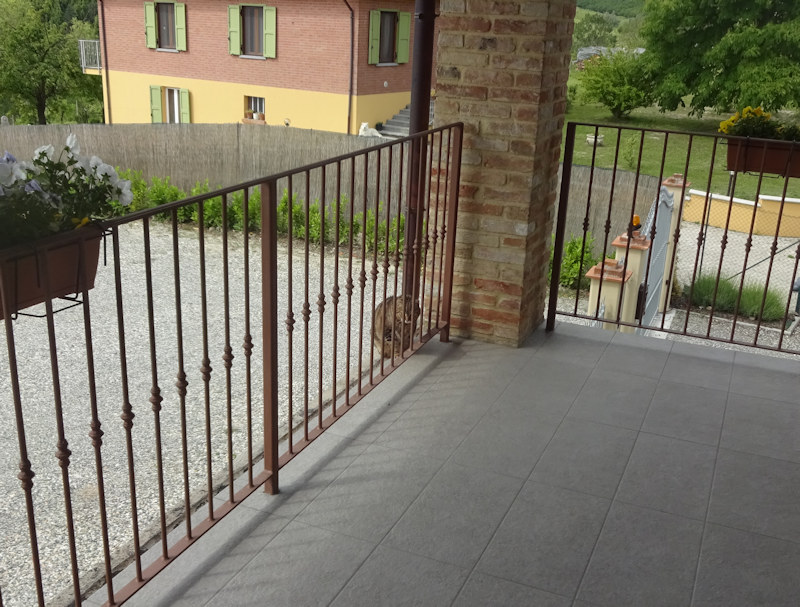
Squirrel's got herself locked out again. 18 May 2016 in Vignale Monferrato.

We're on our way to Casale Monferrato, 14k northeast of Vignale -- that's as the crow flies, not through all the hilltop villages. That's Camagna Monferrato.
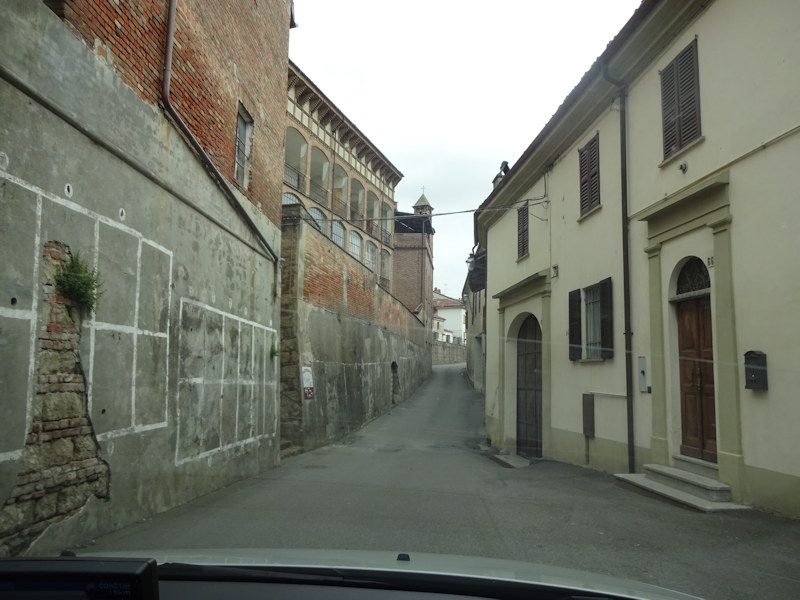
Another hilltop village

And another
Casale Monferrato

This is the central Via Roma in Casale Monferrato, looking north. Casale is a small city of about 36,000, a considerable industrial centre along the banks of the river Po, which is unfortunately perhaps best known for the scandals involving the Eternit factory which produced cement products heavily incorporating asbesto. The resulting lung diseases affected thousands of citizens, and in 2012 a number of company officials were convicted of manslaughter and fined.

Following the Via Roma towards the city centre, pasts the neoclassical mid-19th century façade of the church of Santa Croce. There was a Roman municipium in the area, possibly on this site, but the city existed certainly from the early 700s when there was a Lombard town here. The city's patron saint, St Evasius, usually referred to as a Bishop of Asti, is said to have been beheaded near here either in the late 3rd century, by Romans during Diocletian's persecution, or in the 8th century, by a local Duke of the heretical Arian persuasion.
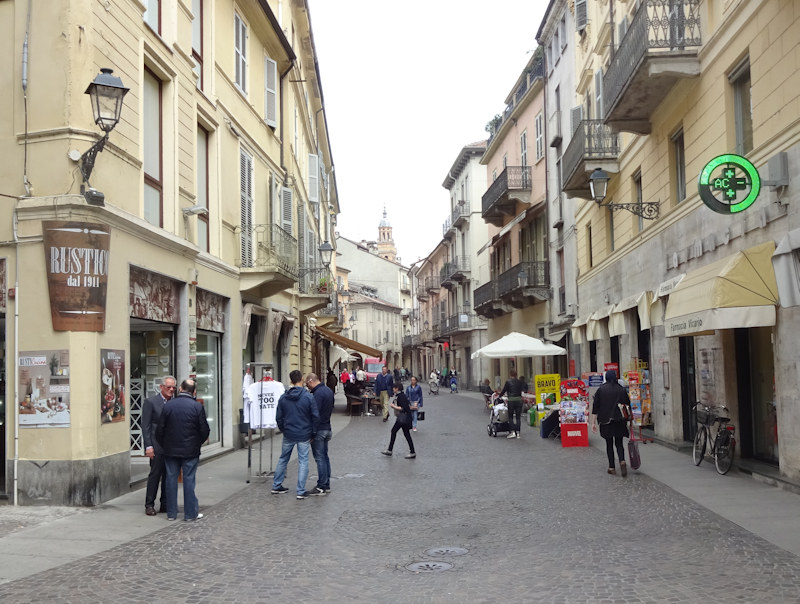
The cult of St Evasius flourished in the region, and in 988 the town was known as Casale di Sant'Evasio. Under Charlemagne's Franks in the late 8th century, Casale came under the rule of the Bishops of Vercelli until the Emperor Friedrich Barbarossa intervened during his struggles in the late 12th century against the northern cities of the Lombard League. Casale remained identified as a pro-imperial Ghibelline stronghold long afterward.
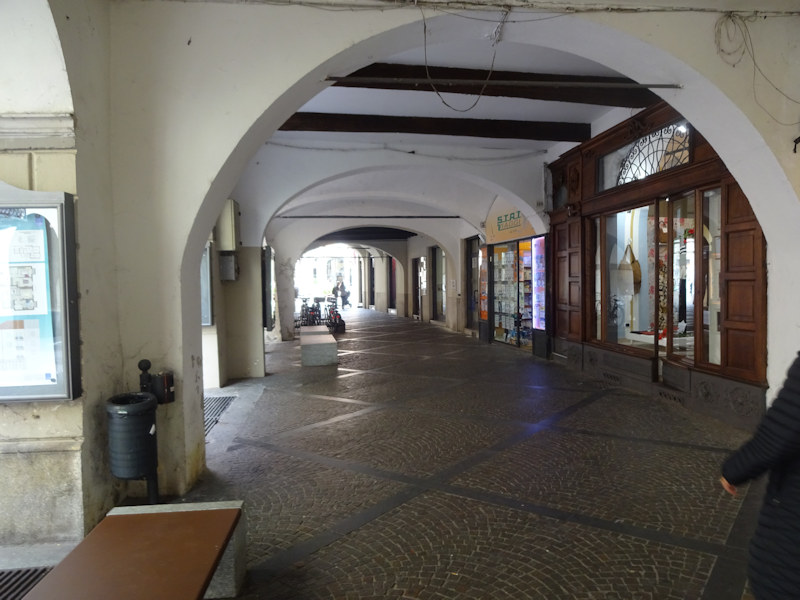
An arcade on the Via Roma leading to the central Piazza Mazzini. During the pro- and con-imperial battles of the time, Casale was sacked in 1215 by the anti-imperial armies of Milan, Vercelli, and the newly founded pro-papal free comune of Alessandria just down the road.

The central Piazza Mazzini, formerly the Roman Forum area, now with the equestian statue of Carlo Alberto, the somewhat liberal King of Sardinia (which included the Piedmont region at the time) who led against the Austrians in the First Italian War of Independence of 1848-49.

Casale Monferrato was a stronghold from Lombard times, and it was considered a chief town of the early Marquessate of Monferrato when Aleramo was created the first Marquess in 958 by his father-in-law the King of Italy Berengar II of Ivrea, confirmed in 962 by Berengar's nemesis the Emperor Otto I. The Aleramici dynasty ruled the marquessate until 1305 -- several members were prominent Crusaders, and Marquess [or Marquis] Conrad was elected King of Jerusalem in 1192 at the time of the Third Crusade (but promptly assassinated, possibly on the order of Richard the Lionheart) -- and in 1253 the Emperor Conrad, Frederick II's ill-fated son, formally bestowed Casale Monferrato upon the then-Marquess Boniface II, though Chivasso was still considered more or less the capital of the Marquessate.
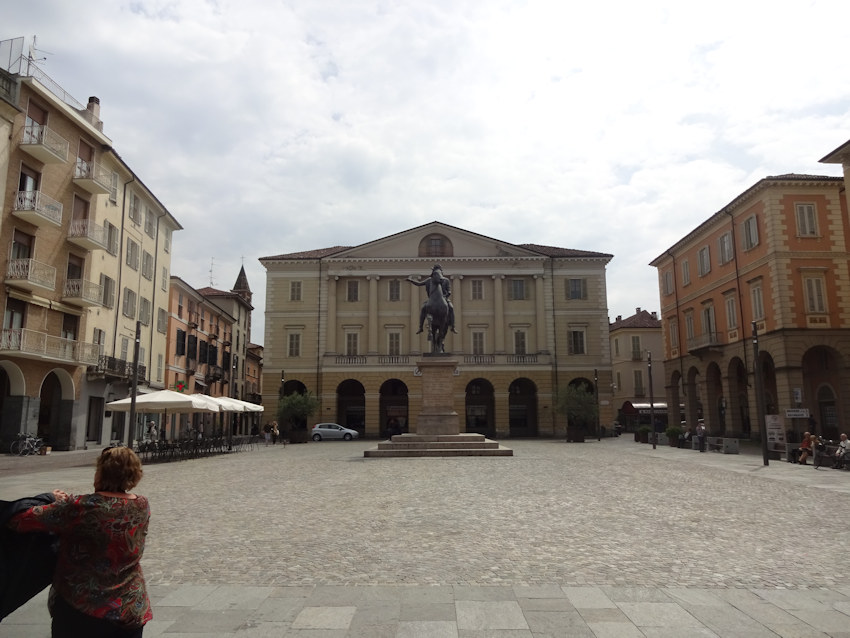
King Carlo Alberto coming at us, dressed as a Roman Senator. In 1278, Casale recognized William VII, the 12th Marquess of Monferrato, as its captain and by 1292 it had been incorporated into the Marquessate. His daughter Yolande had married Andronikos II Palaiologos, the Byzantine Emperor, taking the name of the Empress Irene, and when her brother died in 1305 her son Theodore was able to press his claim, with the help of his father-in-law, a powerful Spinola of Genoa, as the first Marquess of Monferrato of the Palaeologus dynasty. By the early 1400s, the Palaeologi marquesses were being born and dying in Casale.

A block to the east of the Piazza Mazzini, this is the asymmetrical façade of the Cattedrale di Sant'Evasio, or Duomo di Casale Monferrato, originally a Lombard Romanesque church built in 742 over the remains of a Roman temple to Jupiter, then rebuilt and enlarged in the early 12th century and consecrated by the pope in 1107. It became a cathedral when Casale got its own bishopric in 1474.

This is an amazing closed narthex outside of the western end of the church itself, with some interesting modern art.

Originally, it seems, the narthex was open with entrances across the front and on both sides; they were closed off during renovations in the mid-19th century.

The interior has a narrow nave with four aisles, and with side chapels along the outer aisles

The Chapel of the Madonna of Fatima just down the steps into the left aisle

The main altar behind the dome
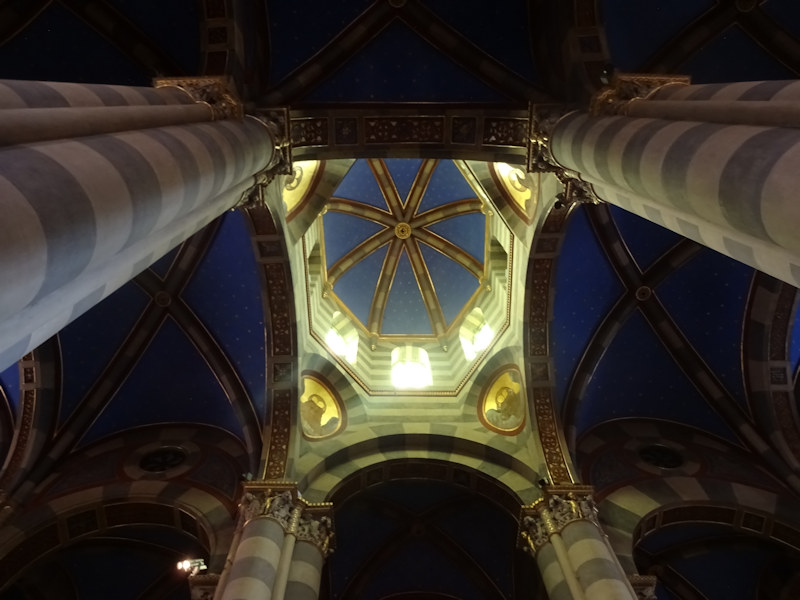
The cupola

The main altar and choir date from the early 18th century.
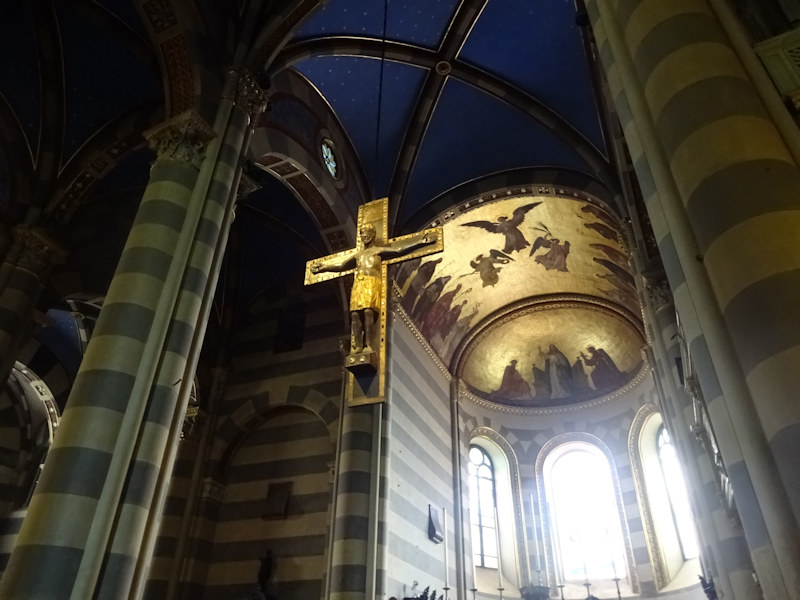
The interesting crucifix over the main altar, made of wood covered with silver and copper and apparently from the 12th century, was stolen in 1403 by the Casale-born mercenary commander Facino Cane from the cathedral of Alessandria, along with other relics of Saint Evasio that Alessandria had stolen from Casale in the sacking of 1215. The paintings date from the 1860s.
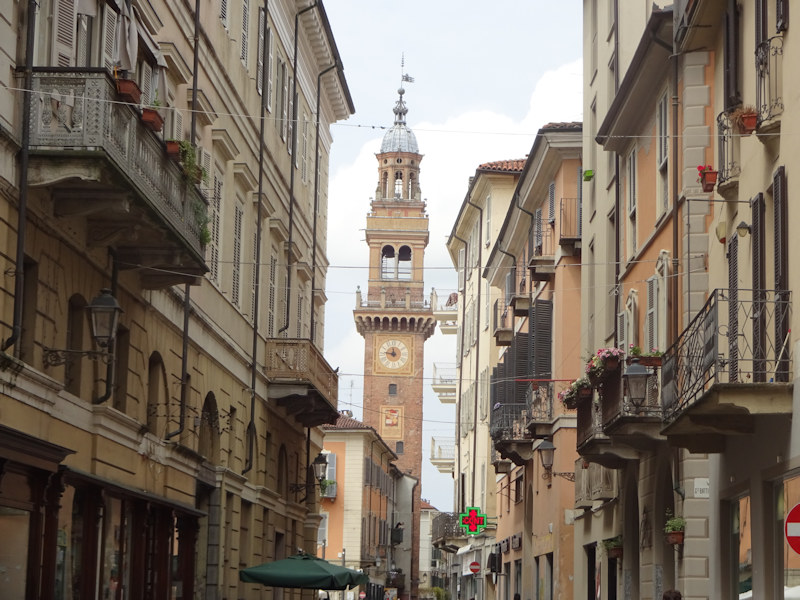
The Via Aurelio Saffi (named for a radical republican and follower of Mazzini) between the Piazza Mazzini looking westward towards the Piazza di Castello

The Torre Civica or Civic Tower of Saint Stefano, first built in the 11th century but badly damaged in 1504 "when a festival to celebrate the peace between Holy Roman Emperor Maximillian I and King Louis XII of France got out of hand" (Wikipedia). Quickly rebuilt, it was restored again in the 18th century and then again in 1920.

The early 19th century Palazzo Ricci di Cereseto and a statue of the once-famous Casalesi architect Luigi Canina, in front of the church of San Stefano on the left, originally a 12th century edifice that was mostly rebuilt in the 17th century and again in the late 19th century.

A church doubtless beloved by its long-time parishioners

Entering the huge Piazza di Castello, presently a carpark and regular street market place, with the fortress in the background. We'll come around to it from a different angle.
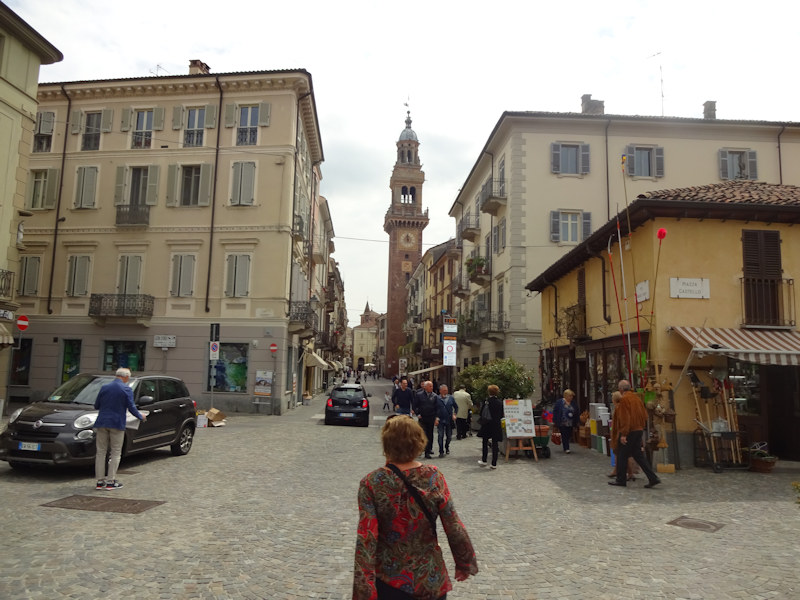
Back along the Via Saffi, right turn at the Piazza Mazzini down the Via Roma to the Santa Croce church again
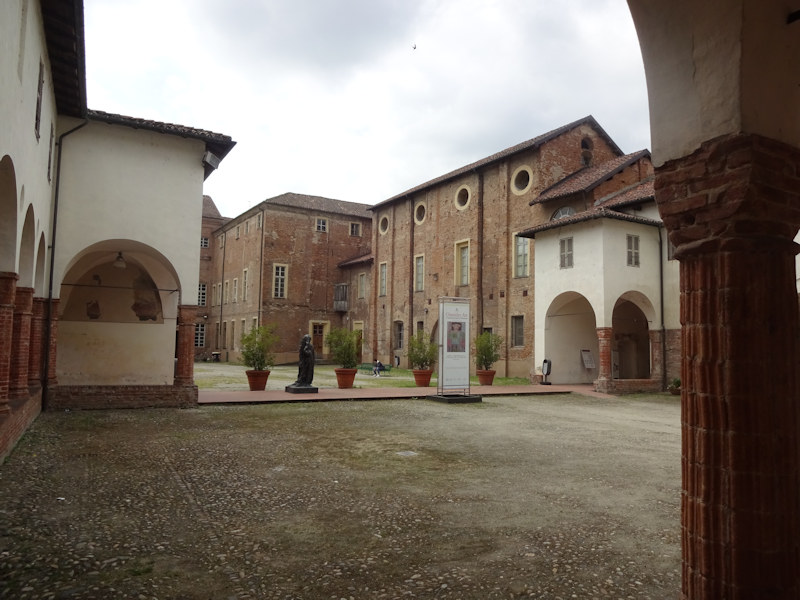
This is the cloister of the former Augustinian convent of Santa Croce, built in the 12th century but much altered over time, and since the mid-19th century hosting the pinacoteca in the Museo Civico (which includes the "Gipsoteca Bistolfi", which we didn't visit).
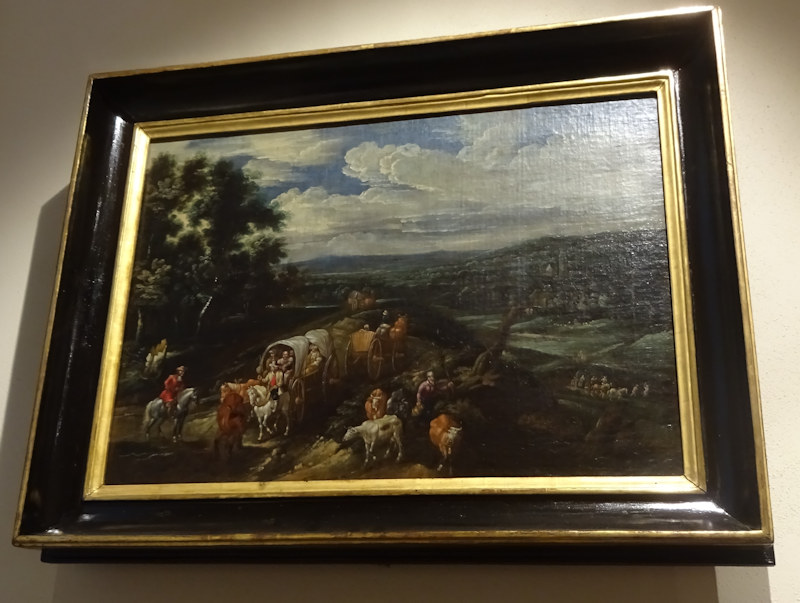
The Museo Civico specializes in artists from the region, but this is a landscape by Jan Bruegel the Elder.

And this inspired goofiness is by the prolific David Vinckboons in the early 17th century.
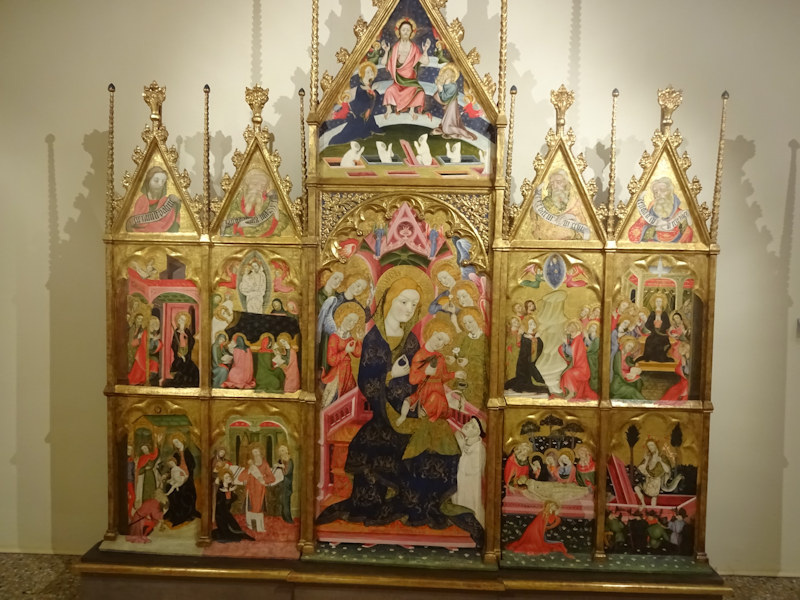
Late 14th century

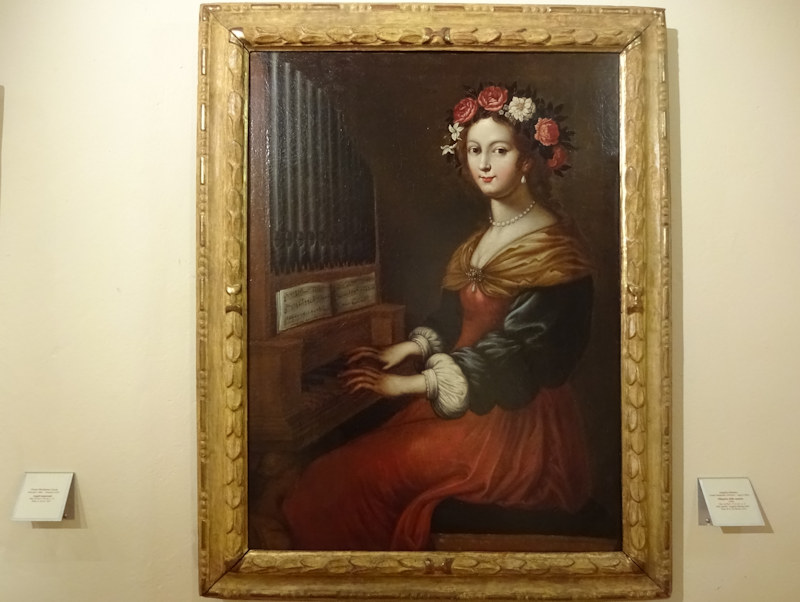
"Allegory of Music", by Casalesi artist Angelica Bottera, labeled as done in 1666, which if true means when she was 15 or 16 years old

The ubiquitous Saint Rocco, with his signature plague buboes and dog bringing him bread; by il Moncalvo in 1608.
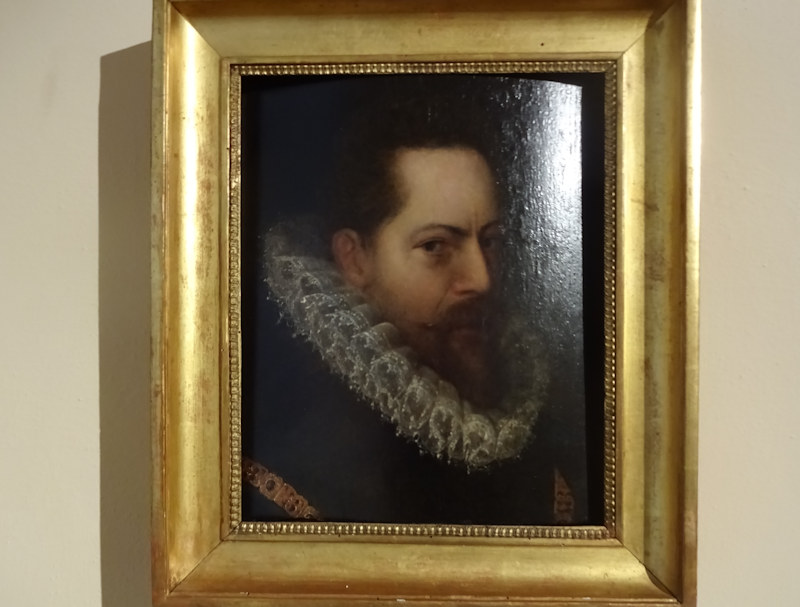
This is by Vaenius, court painter to Alexander Farnese, Duke of Parma, governor of the Spanish Netherlands in the late 1580s, and that's Gen. Parma himself. [I'm one of Parma's fans.]


Nice

The man himself; by Casalesi artist Eleuterio Pagliano, 1866, who fought with Garibaldi and painted his portraits and battles frequently

"A solemn warning for the little smugglers", by Giuseppe Reina, dated 1865

The cloisters of Santa Croce

. . . with frescoes all around it by il Moncalvo from the early 1600s, which we didn't notice.
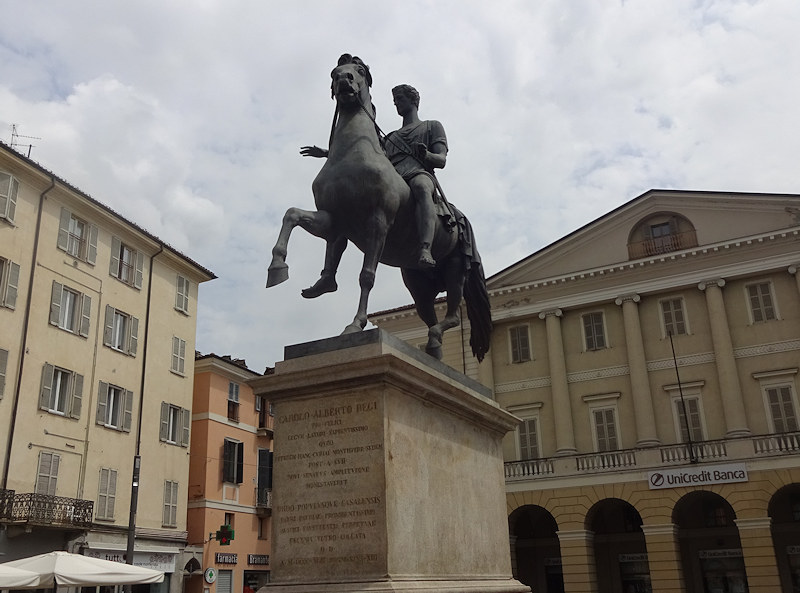
King Charles Albert at his most magnificent, with his shortened toga on

The Piazza Giuseppe Mazzini
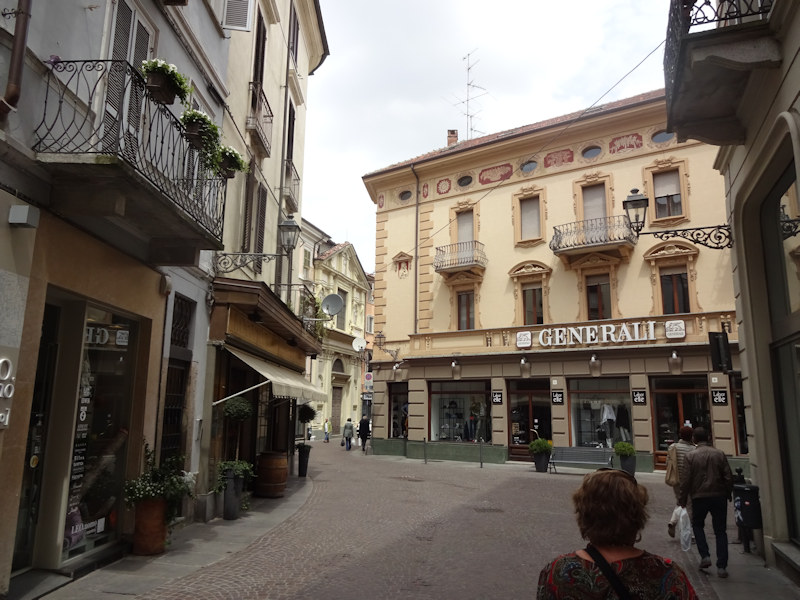
The Via Giovanni Lanza going north


The church of San Domenico, begun in 1471 when William VIII Palaeologus, the Marquess of Montferrat, chose to establish the marquessate court in Casale permanently.

An afternoon stroll along the river Po

Islands in the Po
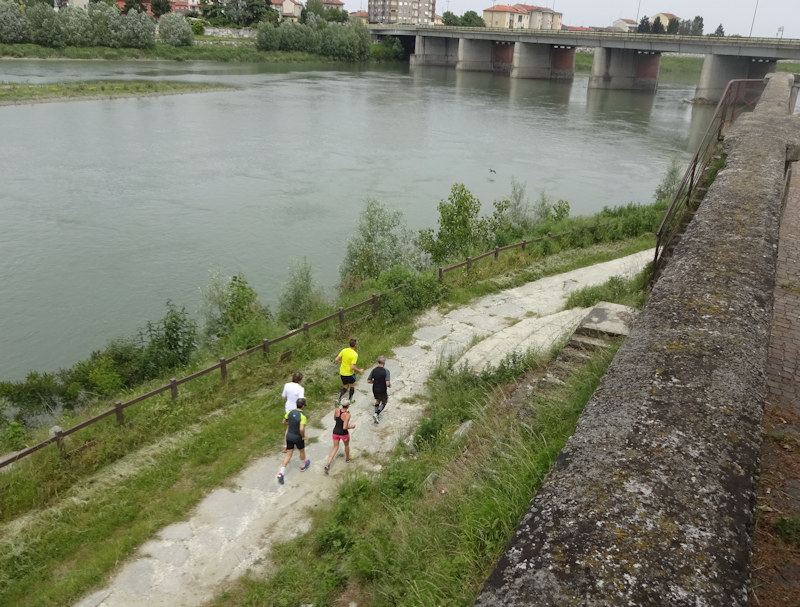
The Po Joggers Club

The Castello dei Paleologi with its war memorial in the Po-side park

The fortress was begun in 1352 under the Paleologi marquesses, and enlarged in the next century. When the Paleologi male line went dry in 1533, Federico II Gonzaga, Marquess of Mantua (or Mantova) and since 1530 Duke of Mantua, was able to claim Monferrato through his wife Margaret Paleologa and have himself confirmed over other claimants by the Emperor Charles V in 1536. Monferrato remained with the Gonzagas of Mantua (raised to a Duchy in 1574) and of Mantua-Nevers, until the early 18th century.
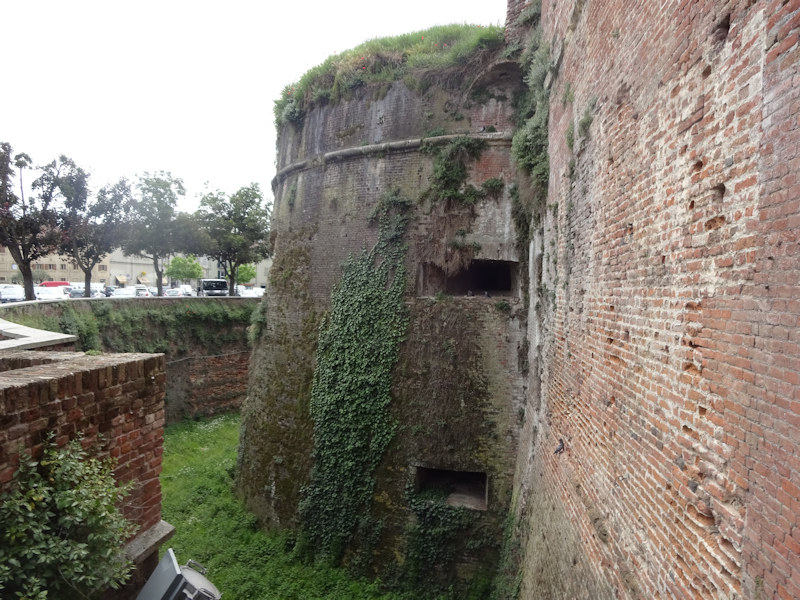
One of the lowered corner towers

This is a Google images screenshot showing the configuration of the castle, though its outer defenses were removed in the 19th century to create the piazza. |
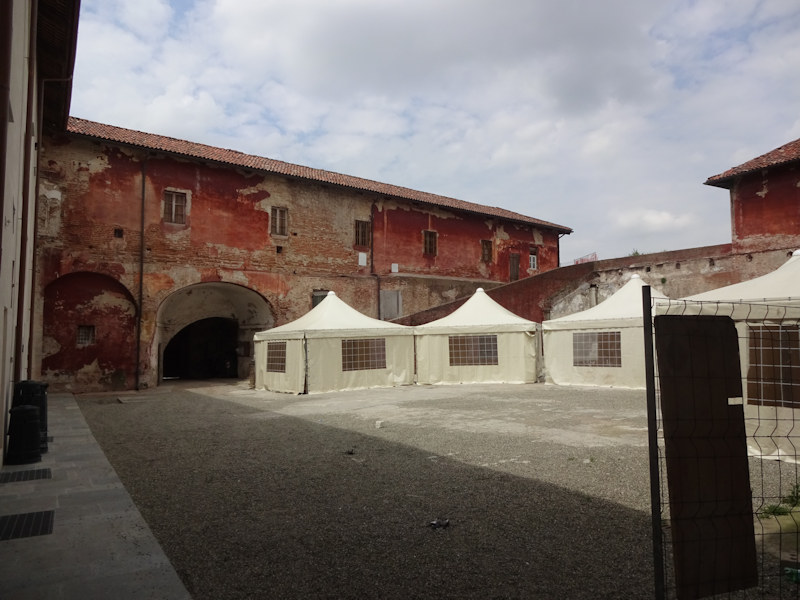
Presently the castle houses the city's archaeological museum and hosts various cultural events, though nothing was going on whilst we were there, and apparently not much is open to the public otherwise.

Across the Piazza Castello, that's the church of Santa Caterina, built for Dominican nuns in 1726.

The Castello dei Paleologi from the carpark -- and now it's time to leave scenic Casale Monferrato until the next time. Onward to Lu!
      
     
  

 Feedback
and suggestions are welcome if positive, resented if negative, Feedback
and suggestions are welcome if positive, resented if negative,  .
All rights reserved, all wrongs avenged. Posted 4 August 2016. .
All rights reserved, all wrongs avenged. Posted 4 August 2016.
|
 Dwight Peck's personal website
Dwight Peck's personal website






















































